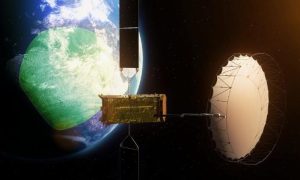What is FR2 5G and How Does It Differ from FR1?
5G technology is revolutionizing the way we connect, offering unprecedented speeds and reliability that are powering everything from smartphones to smart cities. Within the broad spectrum of 5G, there are two distinct frequency ranges: Frequency Range 1 (FR1) and Frequency Range 2 (FR2). Understanding the differences between these two ranges is crucial for anyone involved in the deployment, development, or utilization of 5G technologies.

Key Differences in Frequency
FR1 covers frequencies from 450 MHz to 6 GHz. This range is often referred to as the sub-6 GHz band. It is widely used due to its compatibility with existing cellular bands, which allows for widespread coverage and good penetration of radio waves through buildings and other structures.
In contrast, FR2 operates in the higher frequency bands from 24.25 GHz to 52.6 GHz. These are known as millimeter waves (mmWave) due to their shorter wavelength. The use of higher frequencies in FR2 allows for much higher data rates and capacity over short distances, but with reduced penetration power through obstacles.
Capacity and Speed
One of the most significant advantages of FR2 is its ability to support extremely high data rates. In ideal conditions, FR2 can deliver speeds up to several gigabits per second (Gbps), significantly faster than FR1, which typically delivers speeds in the range of several hundred megabits per second (Mbps). This vast difference in speed is due to the larger bandwidths available in the mmWave spectrum, which are not as congested as those in the sub-6 GHz range.
Coverage and Penetration
The high-frequency nature of FR2 comes with its set of challenges, primarily in terms of coverage and penetration. While FR1 signals can travel longer distances and penetrate buildings and other structures more effectively, FR2 signals have a much shorter range and are more susceptible to interference from physical obstacles like walls and windows.
This limitation means that FR2 deployments typically require a denser network of antennas and repeaters to ensure consistent service coverage. This infrastructure demand can increase the complexity and cost of network deployment in urban areas.
Application Use Cases
The differences in characteristics between FR1 and FR2 naturally lead to different use cases for each frequency range. FR1 is ideal for providing broad coverage across vast areas, making it suitable for general mobile internet usage and IoT applications in rural and suburban settings.
FR2, with its high data rate capacity, is better suited for high-density urban environments where large amounts of data need to be transmitted quickly over short distances. Typical applications include high-definition video streaming, virtual reality, and other bandwidth-intensive services that benefit from the high-speed capabilities of mmWave technology.
Deployment Considerations
Deploying FR2 technology requires careful planning due to its high-frequency characteristics. Network designers must consider the urban landscape, building materials, and even foliage, as these can all impact signal integrity. However, the payoff is significant, as FR2 enables applications and services that were previously not possible with lower frequency technologies.
FR2 5G in the Bigger Picture
As the world leans more into the capabilities offered by 5G, understanding the distinctions between FR1 and FR2 becomes more than just technical; it's foundational to leveraging this technology to its fullest potential. While FR1 provides the backbone for broad coverage and reliability, FR2 pushes the envelope on what's possible with ultra-fast speeds and high capacity, albeit within more limited areas.
By tapping into the strengths of both frequency ranges, network operators can create a balanced, robust network that supports a wide array of devices and services, making 5G a transformative force in the tech landscape.